If you love playing video games and want to make money from them, you might want to explore the world of the best NFT PC games. These are games that use non-fungible tokens, or NFTs, to create unique and valuable digital assets that players can own and trade. NFTs can represent anything from weapons, skins, and characters to virtual lands and more. You can find various marketplaces where you can buy, sell or trade these NFTs, giving you more control and profit from your gaming experience.
In that case, you might be interested in developing an NFT game – a new game type that utilizes non-fungible tokens, or NFTs, to represent in-game items, characters, lands, and more. Players can buy, sell or trade these NFTs on various marketplaces, giving players actual ownership and value for their playtime.
These features make NFT games so attractive, bringing about a new era of monetization of digital assets by the game’s player base. NFTs shape these game’s economic models and, if successful, could help both the developers and players build a business out of the game.
This article will explore NFTs, how they work within games, and how you can begin developing your own with some easy steps and resources.
What are NFTs, and how do they work?
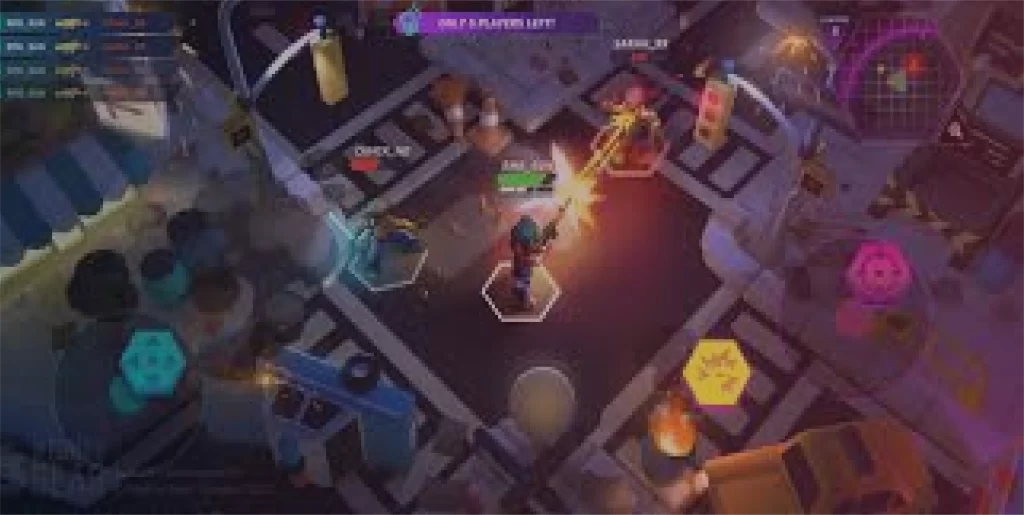
In play-to-earn games, NFTs operate as unique digital assets used to create, own, and trade in-game items. Unlike cryptocurrencies, which are fungible and interchangeable, NFTs are non-fungible and irreplaceable. This means that each NFT has a distinct identity and value that cannot be duplicated or exchanged for another.
For example, Bitcoin is fungible because you can swap one Bitcoin for another Bitcoin of equal value. However, an NFT of a rare digital artwork is non-fungible because you cannot trade it for another NFT of the same artwork or any other NFT. Each NFT is one of a kind and has its own history and provenance.
NFTs are created and stored on a blockchain, which is a distributed ledger that records transactions and verifies their authenticity. A blockchain ensures that NFTs are secure, transparent, and immutable. No one can tamper with or counterfeit an NFT once it is minted on the blockchain.
To create an NFT, you need to use a smart contract, a self-executing program that defines the rules and functions of the NFT. A smart contract also assigns a unique identification code and metadata to the NFT, which describes its attributes and characteristics.
What are some of the best NFT games?
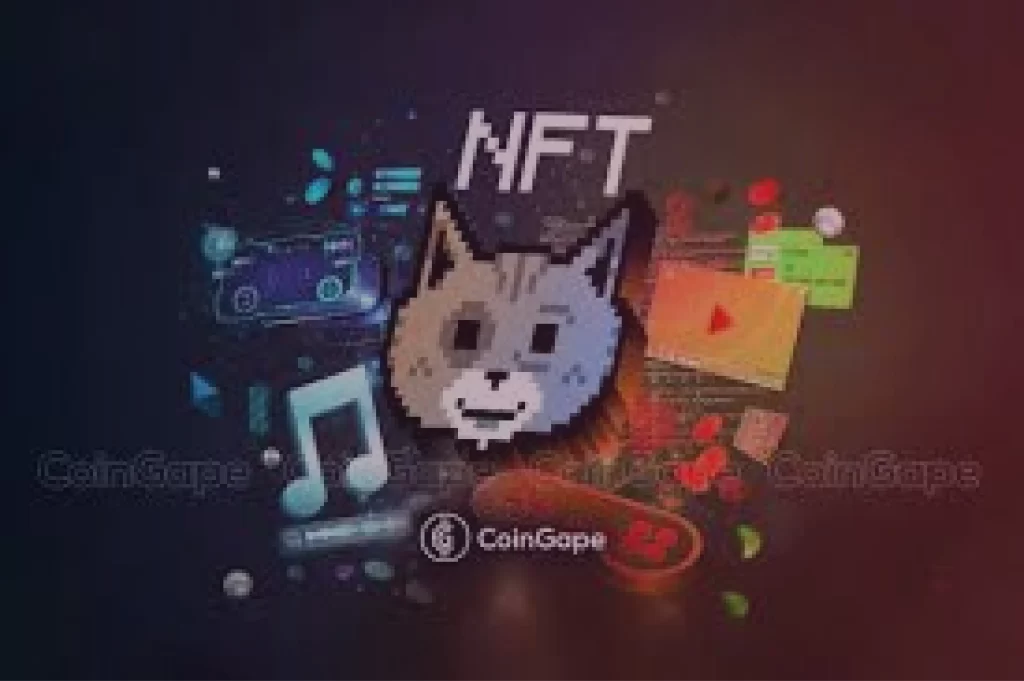
Before embarking on creating your own P2E game, it will be great to look at what the market offers to have an idea of what works in this space. Some popular and successful NFT games include Axie Infinity, Gods Unchained, and Sandbox.
Axie Infinity, a monster-breeding RPG where you can raise, breed, and battle cute creatures called Axies; Gods Unchained, a digital card game where you can collect and play with cards that represent gods, heroes, and spells from different mythologies; and The Sandbox, a voxel-based game where you can create and explore virtual worlds.
These game deploy their native crypto tokens in combination with NFTs to create exciting gaming experiences for their players. They also come with various game modes and tournaments where players can compete against each other to obtain the game’s tokens or NFTs, which they can then sell on a marketplace.
How to develop your own NFT PC games?
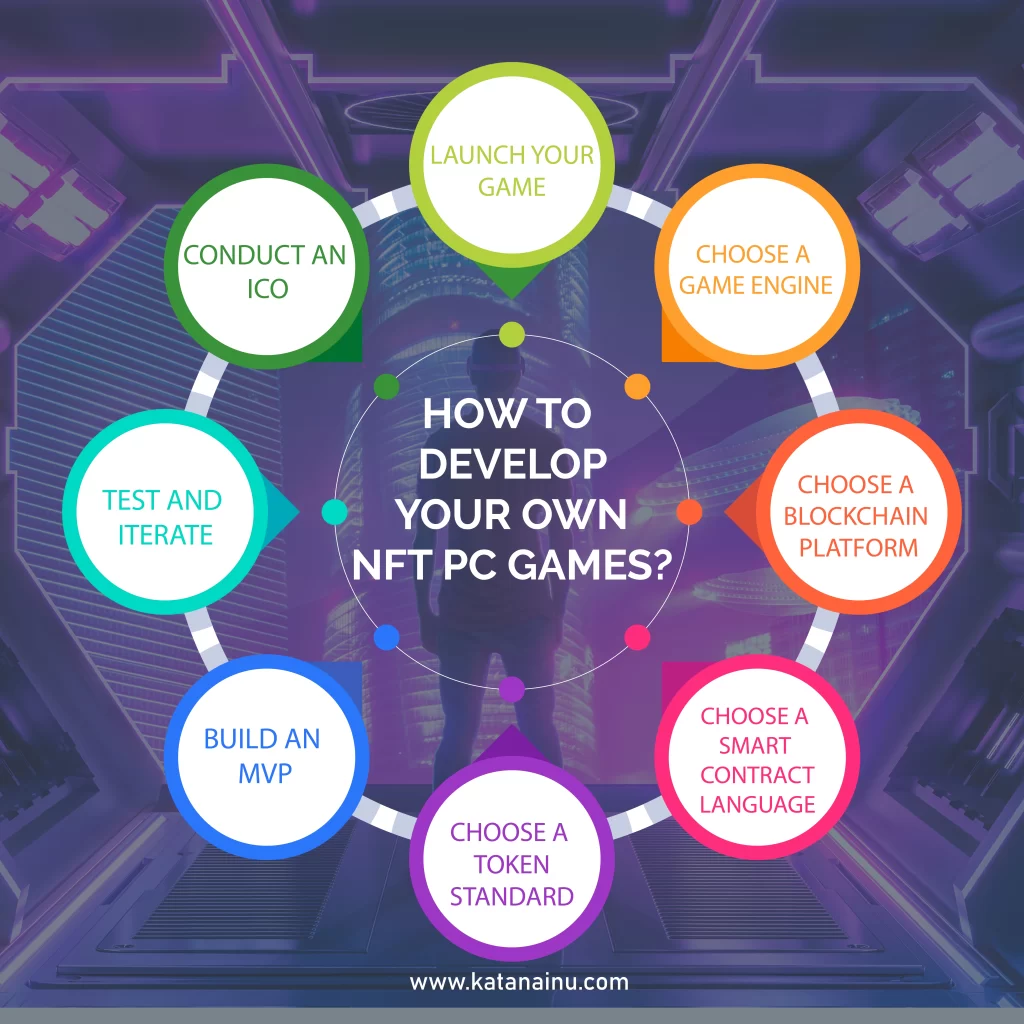
Developing an NFT game can be a fun and rewarding way to express your creativity and earn money from your passion. However, it also requires some technical skills and knowledge of blockchain technology and NFT standards. Here are some basic steps and requirements you can look into if you wish to take this path:
- Choose a game engine: A game engine is a software framework that provides the tools and features for creating and running a video game. You can use popular game engines such as Unity or Unreal Engine for developing your NFT game. These engines support various platforms, such as Web, PC, Android, and iOS, and have a large community of developers and resources.
- Choose a blockchain platform: A blockchain platform is a network that supports creating and operating decentralized applications (DApps) and smart contracts. You can use popular blockchain platforms like Ethereum, Tezos, Solana, or Flow to develop your P2E game. These platforms have different advantages and disadvantages in terms of scalability, security, fees, and compatibility.
- Choose a smart contract language: A smart contract language is a programming language that allows you to write the logic and rules of your NFT game. You can use popular smart contract languages such as Solidity or Vyper for Ethereum, SmartPy or LIGO for Tezos, Rust or C for Solana, or Cadence for Flow. These languages have different syntaxes and features that suit different use cases and preferences.
- Choose a token standard: A token standard is a specification that defines how NFTs can be created, transferred, and interacted with by users and applications. You can use popular token standards such as ERC-721 or ERC-1155 for Ethereum, FA2 for Tezos, SPL for Solana, or FungibleToken or NonFungibleToken for Flow. These standards have different functionalities and properties that suit different types of assets and games.
- Build an MVP (Minimum Viable Product): An MVP is a version of your P2E game with core features and functionalities demonstrating its value and potential. You can use the game engine, the blockchain platform, the smart contract language, and the token standard of your choice to build your MVP. You can also use tools and platforms to help you create and deploy your game easily and quickly. For instance, you can use OpenSea or Rarible for marketplace integration, Chainlink or Band Protocol for Oracle services, IPFS or Arweave for file storage, etc.
- Test and iterate: Testing and iterating is the process of checking the quality and performance of your game and making improvements based on feedback and data. You can use various methods and tools to test and iterate your game, such as unit testing, debugging, user testing, analytics, etc. You can also use platforms such as Testnet or Rinkeby to test your smart contracts and transactions without spending real money or affecting the main network.
- Conduct an ICO (Initial Coin Offering): An ICO raises funds for your P2E game by selling its native tokens to investors or players. You can use platforms such as CoinList or Polkastarter to conduct your ICO securely and competently. You can also use platforms such as Uniswap or PancakeSwap to list your tokens on decentralized exchanges (DEXs), where users can buy and sell them with other cryptocurrencies.
- Launch your game: Launching your game is the final step of developing your game, where you make it available to the public on various platforms and channels. You can use platforms such as Steam or Epic Games Store to distribute your game to PC users. You can also use platforms like Google Play Store or Apple App Store to distribute your game to mobile users. You can also showcase your games’ NFTs to potential buyers and collectors on marketplaces like OpenSea or Rarible.
Final Thoughts…
NFT games are a new and exciting way to play and create games that use non-fungible tokens to represent digital assets with unique value and scarcity. Following this guide, you can learn the basics of NFTs and how to use them in your game projects. You can also discover some of the best tools and platforms to help you develop your own game from scratch.
However, developing an NFT game is a challenging task. It requires technical skills, knowledge, and creativity. It also involves risks and challenges, such as legal issues, security threats, market fluctuations, and user expectations. Therefore, you should always research, plan, test, iterate, and seek feedback and support from the NFT gaming community.








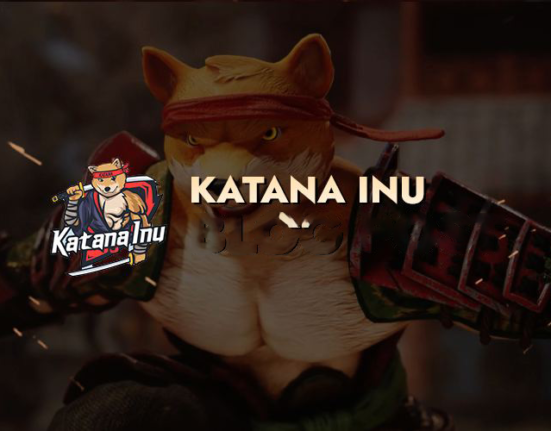




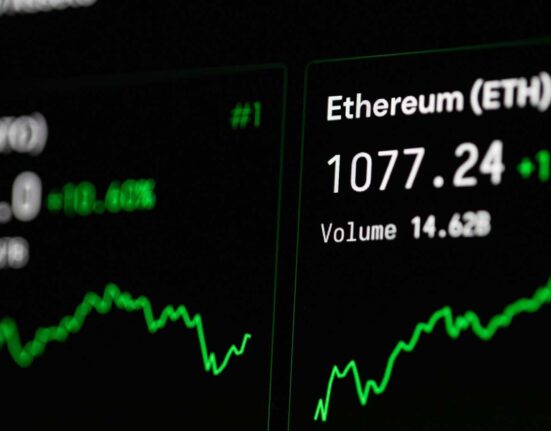
Leave feedback about this